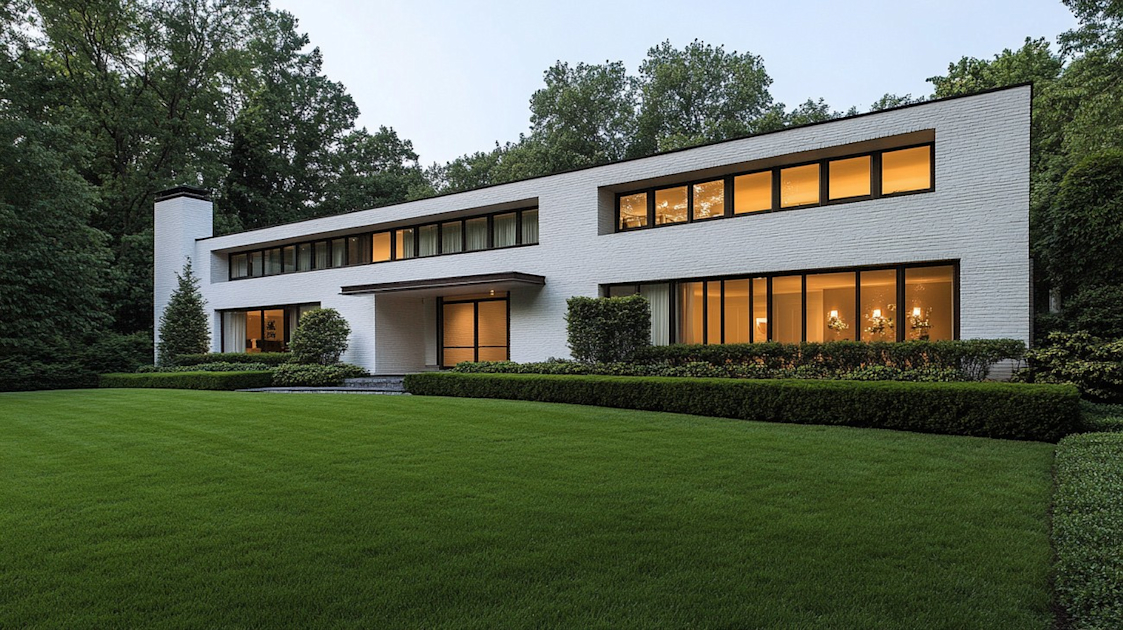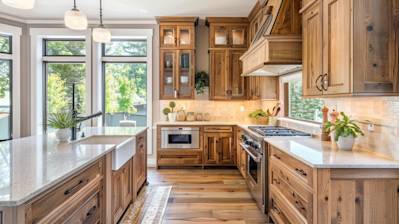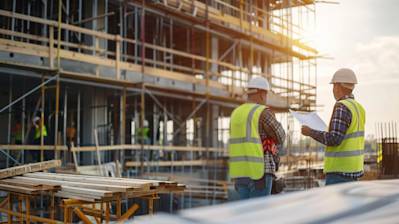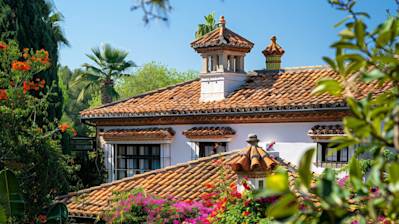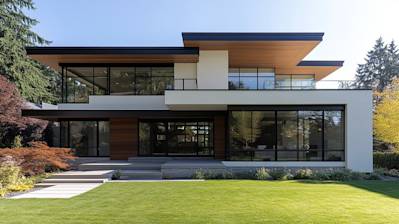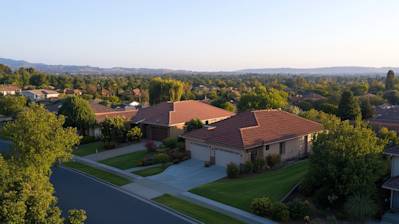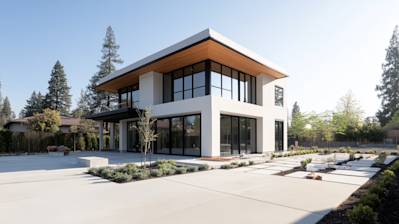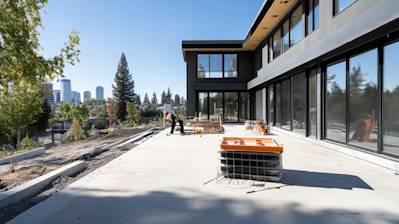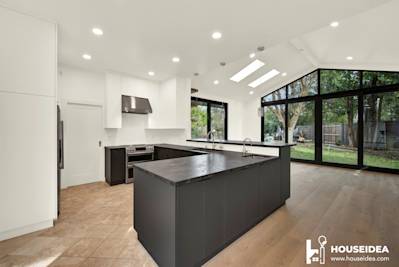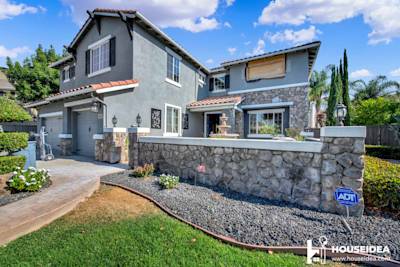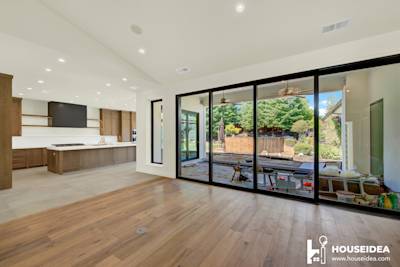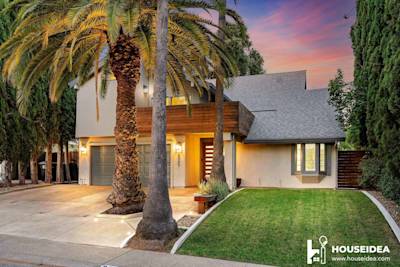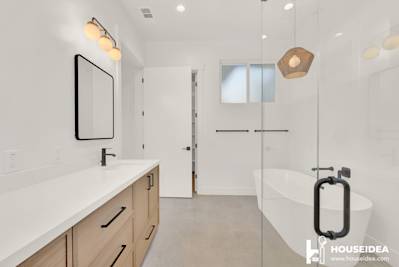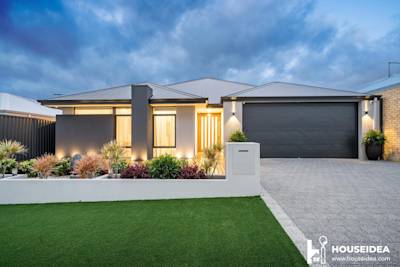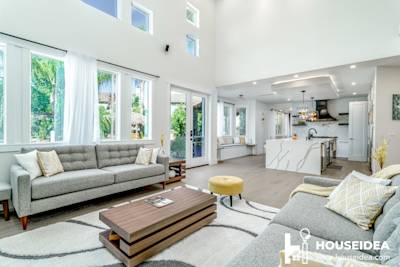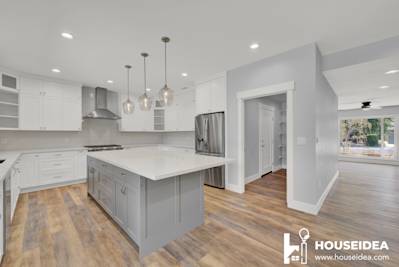When it comes to house exteriors, white brick exudes an allure that's as timeless as it is classic. Grand in its simplicity, a bright white facade adds character and value to any architectural style. Whether grand Victorian homes or modern minimalistic abodes, white brick houses sport an inherent versatility and charm. Walk with us as we explore the world of white brick houses, their design, maintenance, and their surging popularity in interior and exterior design.
The Timeless Appeal of White Brick Houses
The charm of a white brick house lies in its classic and timeless veneer. With a clean, consistent look, white brick complements any home style from rustic to modern — a true testament to its versatility. While the use of brick in construction dates back thousands of years, the modern white brick house has a history firmly rooted in the architecture of the 20th century. This enduring look continues to charm homeowners and architecture enthusiasts alike.
Whether it's the allure of simple, clean lines, or the unique blend of rustic and contemporary styles, it's easy to understand why white brick houses continue to capture our hearts and minds.
Benefit of White Brick Houses
- Durability: White brick houses are known for their durability and longevity. The brickwork doesn't rot, warp, or dent, making it a great choice for homes in different weather conditions.
- Low Maintenance: With a low requirement for maintenance, the white brick facade holds up well against the elements and requires less frequent painting than other house materials.
- Energy Efficient: Brick has excellent thermal mass properties, helping to insulate the home and reduce energy costs.
Exploring Unique White Brick House Designs
White brick houses are anything but monotonous when it comes to design. From contemporary minimalist designs to classic farmhouse styles, the design possibilities are truly endless.
Farmhouse Charm
Farmhouse-style homes, often characterized by cozy, rustic elements and warm, inviting spaces, shine wonderfully with a white brick exterior. Accented by natural wood components and black hardware, the white brick offers a harmonious contrast that is both striking and homey.
Contemporary Elegance
Modern homes, in contrast, tend to favor minimal, sleek lines. The white brick house's recipe for success in these settings lies in its stark, clean aesthetic, often complemented by oversized black frame windows and doors for a bold, magnetic impact.
Urban Industrial
Who says white brick is only for traditional exteriors? In urban settings, white-painted brick exteriors have become a staple of the sophisticated industrial style. The juxtaposition of rough brick surfaces with refined, modern details injects an invigorating twist into city landscapes.
How to Maintain Your White Brick House
A little maintenance goes a long way in keeping your white brick house in its prime. Although brick is incredibly durable and weather-resistant, it should still be regularly looked after.
Regular Cleaning
A mild, bleach-free household detergent or brick cleaner along with a soft-bristled brush is perfect for regular cleaning. Bear in mind that harsh chemicals can affect the brick's durability and discolor white paint.
Repointing
Over the years, the mortar between your bricks might need repointing if it begins to erode. This can be handled by a professional mason to ensure durability and longevity.
Sealing
It is recommended that white brick be sealed to help prevent dirt and stains from infiltrating the porous material. Sealants also offer an added layer of protection against moisture.
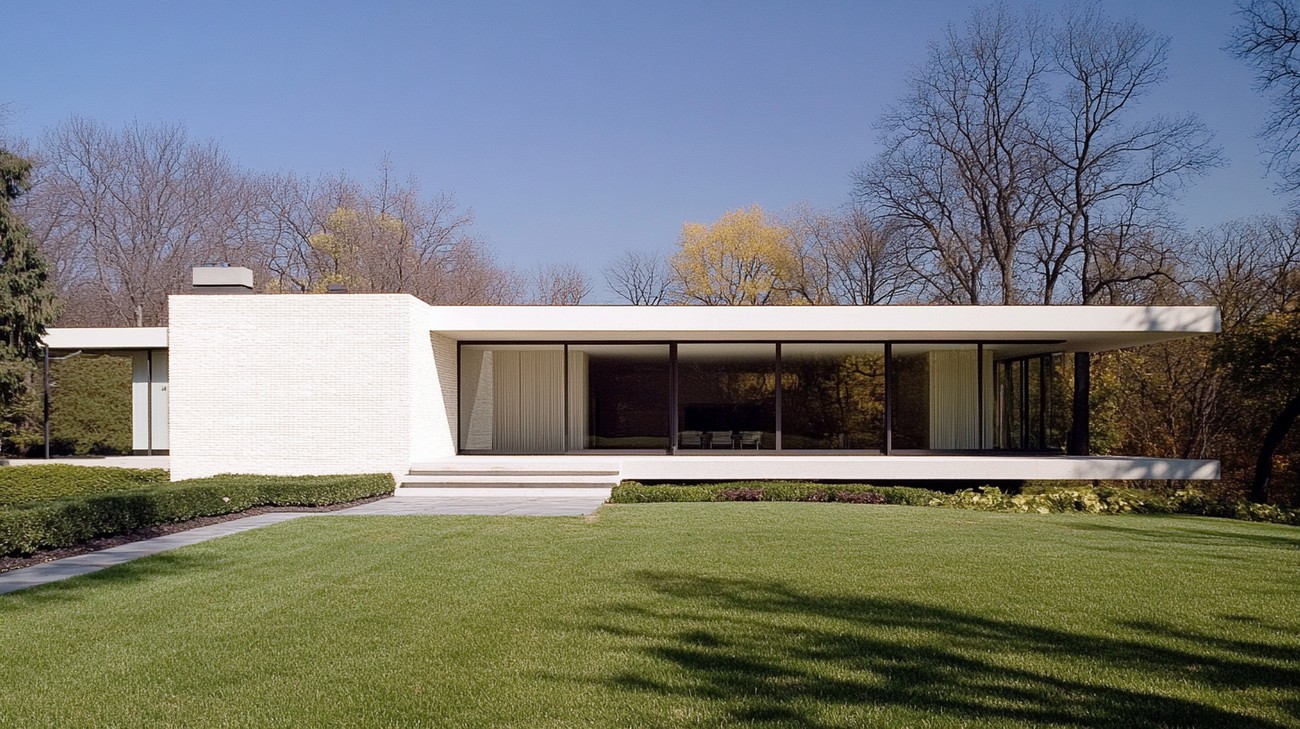
Frequently Asked Questions about White Brick House
Do white brick houses require more maintenance?
Possibly. White brick houses can show dirt more easily than houses with darker-colored brick; however, with proper care, the maintenance required isn't too extensive. Usually, a periodic wash to remove dust, dirt, and grime will be sufficient to keep your white brick house looking beautiful.
Are white brick houses more expensive?
The color of the brick doesn't typically affect the price of the house. The cost hinges more on the structure, location, size, and design of the home. Although, painting or white-washing your brick house may require an additional budget if you're transforming an existing brick to a white brick house.
How do I paint my brick house white?
Painting brick requires some preparation. First, clean the brick thoroughly and seal any cracks. Next, apply a primer to ensure the paint sticks effectively to the brick. Finally, apply a high-quality, exterior-grade paint – in this case, white. Always double-check that the paint product you're using is suitable for exterior brick and consider hiring a professional for the best outcomes.
What kinds of design styles can suit a white brick house?
White brick houses exhibit a versatile beauty that can suit various design styles. Whether you’re into a sleek modern look, a traditional Hamptons style, rustic farmhouse, or even the romantic charm of a cottage, a white brick house will seamlessly blend with each of these styles.
How is a white wash brick house different from a painted white brick house?
White washing is a technique that uses paint diluted with water, giving the brick a lighter, distressed look while allowing the brick texture to show through. A painted white brick house, in contrast, includes a regular paint application that results in full, opaque coverage, hiding the brick's texture and color completely.
Can I change my existing red brick house to a white brick house?
Absolutely. You can change your brick color by painting or white-washing. Both these methods work well, but they offer different looks. Painting gives you a clean, modern appearance, while white-washing provides a more rustic, vintage aesthetic.
What's the best way to keep a white brick house clean?
The best way to keep a white brick house clean is to do periodic pressure washing. Pressure washing can remove grime, dirt, and stains that often show up on white brick. Just make sure to use the correct pressure setting to avoid damaging the bricks.
What are the best colors to pair with a white brick house?
White is a versatile color that can pretty much go with anything. However, for a white brick house, black or deep blue accents on the door, window frames, and roof can offer a striking contrast. Other colors like grey, beige, or soft pastels also make great companions to a white brick house.

Pros of a White Brick House
Standout Appearance
Unique Aesthetic Appeal
One of the main advantages of a white brick house is its unique aesthetic appeal. The combination of the gleaming white color with the classic texture of brick can make a home stand out in any neighbourhood. Urban and traditional landscapes alike are sure to be enlivened by the standout character of a white brick house.
Timeless Design
White brick houses are not only unique, but they also offer a timeless design appeal. The use of white brick lends a house a sense of ageless charm and grandeur, which only tends to grow more appealing with time. This ensures that your house always stays in style no matter how trends evolve.
Low Maintenance
Dirt and Stains
Another significant advantage of white brick houses relates to their low maintenance needs. Bricks are naturally resistant to dirt and stains, which implies that your white brick façade will require less frequent cleaning than houses made from other materials like wood or stucco.
Long-lasting
In addition to being low maintenance, white brick houses are also sturdy and long-lasting. Bricks are renowned for their durability and can withstand harsh weather conditions, fire, and time. A white brick house is thus a worthwhile investment promising a lasting living solution.
Energy Efficiency
Natural Insulation
White brick houses also help enhance energy efficiency. Bricks naturally possess quality insulating properties, helping to keep the house warm during winter and cool during summer. This not only creates a comfortable living environment but also reduces the need for artificial heating and cooling systems, leading to substantial energy savings.
Reflective Properties
The white color of the house can contribute to energy efficiency as well. Due to its reflective properties, white can prevent heat absorption, keeping the house cooler during the peak summer months.
Cons of a White Brick House
Initial Cost
High Building Expenses
One of the main disadvantages of a white brick house relates to the cost. Building a house with bricks tends to be more expensive compared to other building materials. The same goes for possibly higher costs due to professional bricklaying that might be needed.
Maintenance Challenges
Whitewash or Paint Over Time
While bricks are low maintenance, the white color might pose some challenges. Whitewash or paint can fade over time due to weather conditions, and will need periodic touch-ups to maintain the aesthetic appeal.
Visible Stains
Another issue with white brick houses is that, even though brick is resistant to stain and dirt, when it does get dirty, it is more visible on a white surface. This may necessitate more regular cleaning to keep the bricks looking their best.
Design Limitations
Limited Customization
White brick houses may not offer too many customization options. Since the bricks are typically uniform in size and shape, there's a limit to the architectural variations that can be introduced.
Mismatch with Landscape
In some instances, a white brick house might not blend well with the surrounding landscape especially if the environment has more earth tones. The stark white can stick out, instead of harmoniously merging with the natural environment.
Environmental Impact
Resource Intensive Construction
Bricks are a resource-intensive material. Brick manufacture is associated with energy consumption, mining devastation and greenhouse gas emissions which have negative implications for environmental sustainability.

Myths and Misconceptions About White Brick Houses
In the world of architecture and design, few terms are as simultaneously beloved and misunderstood as "white brick house". This seemingly simple phrase can stir up a storm of contradiction, misinterpretation, and outright myth. Here, we aim to debunk the misconceptions surrounding white brick houses and provide a thorough understanding of them.
Myth 1: White Brick Houses are More Expensive to Maintain
One of the common misconceptions associated with white brick houses is their purported high maintenance cost. Many people believe that due to their stark color, white brick houses require frequent cleaning and upkeep to maintain their pristine appearance.
Fact:
The truth is, while white brick can show dirt more easily than darker colors, it does not require more frequent cleaning. The maintenance of a brick house, white or otherwise, largely depends on the quality of the craftsmanship, the type of brick used, and the local environment and weather conditions.
Myth 2: White Brick Houses are More Susceptible to Weather Damage
A pervasive myth suggests that white brick houses are more vulnerable to weather damage. The notion is that the white pigment used may be less durable, leading to more rapid wear and tear.
Fact:
In reality, the color of the brick has little to do with its resilience to weather conditions. The durability of brick architecture depends primarily on the quality and integrity of the brick material itself, along with the skills of the masons who constructed the building.
Myth 3: White Brick is Not Real Brick
This is a curious yet prevalent myth: the idea that white brick is not "real" brick but instead a kind of faux brick. This assumption likely stems from the unusual color, as white is not typically associated with natural clay bricks.
Fact:
It is entirely possible (and quite common) to produce genuine, high-quality bricks that are white. The coloration is typically achieved through a process called "white washing," where a thin layer of paint or lime is applied to the brick after firing. This does not affect the physical properties or durability of the brick.
Myth 4: White Brick Houses are a Recent Trend
There’s a prevailing myth that white brick houses are a recent architectural innovation, born out of current design trends.
Fact:
The use of white brick in architecture dates back centuries. In fact, in many parts of Europe, it was common to paint brickwork white, creating a bright and striking appearance. Thus, a white brick house isn't an invention of contemporary design, but an aesthetic that has endured for hundreds of years.
Myth 5: White Brick Fading is Unavoidable
One of the most misunderstood aspects of owning a white brick house is the idea that fading is inevitable and irreversible.
Fact:
While all colors can fade over time due to exposure to sunlight and harsh weather conditions, this is not uniquely a white brick problem. Moreover, there are many sealants available today that can protect the paint on brick from fading, or restore the color if fading occurs. It's nothing more than a basic maintenance requirement that comes with owning a house, no matter the exterior color or material.
Myth 6: Building with White Brick is Environmentally Harmful
Another myth is the belief that producing white bricks contributes more to environmental pollution than traditional bricks, due to the whitewashing process.
Fact:
This is not correct. Firstly, whitewashing involves the application of lime, not chemical-laden paint. Lime is a natural product that does not harm the environment. Secondly, white bricks can be more energy-efficient, as they reflect sunlight rather than absorbing it, which can help reduce energy usage for cooling in hot climates.
Summary
A white brick house truly has its own charm and allure. It can be reminiscent of a fairy-tale cottage or a classical mansion, depending on its architecture. It's fascinating how its exterior can swiftly blend in any surroundings, be it in the city or countryside. One of the major advantages of such a house is the timeless appeal of white brick, which never goes out of style.
Practicality is also an aspect to admire in a white brick house. Brick houses in general are known for their durability and can withstand harsh weather conditions. When painted white, these attributes are coupled with the advantage of better heat reflection. The result is a home that's not only beautiful, but also energy-efficient.
Lastly, a white brick house offers a blank canvas for homeowners to personalize. Its neutral exterior can be easily dressed up with pops of color through doors, shutters, or landscaping. And when it comes to resale, white homes often have higher market values due to their universal appeal. Ultimately, living in a white brick house can be a dream come true for many homeowners, offering an ideal blend of beauty, durability, flexibility, and value.
About HouseIdea
HouseIdea is based right in the heart of Sacramento, CA where we've been helping clients reimagine and redesign their living spaces since our establishment. We're not your average interior design firm. We thrive on the unique, the chic, and the modern. Get a taste of how great your house could look and function with a touch of HouseIdea influence. Our dedicated team always goes the extra mile to personalize every project, ensuring the end result is as unique as you!
Tags: home, architecture, exterior,

